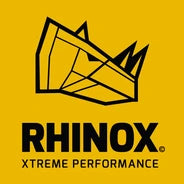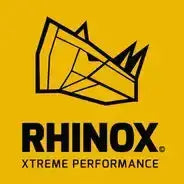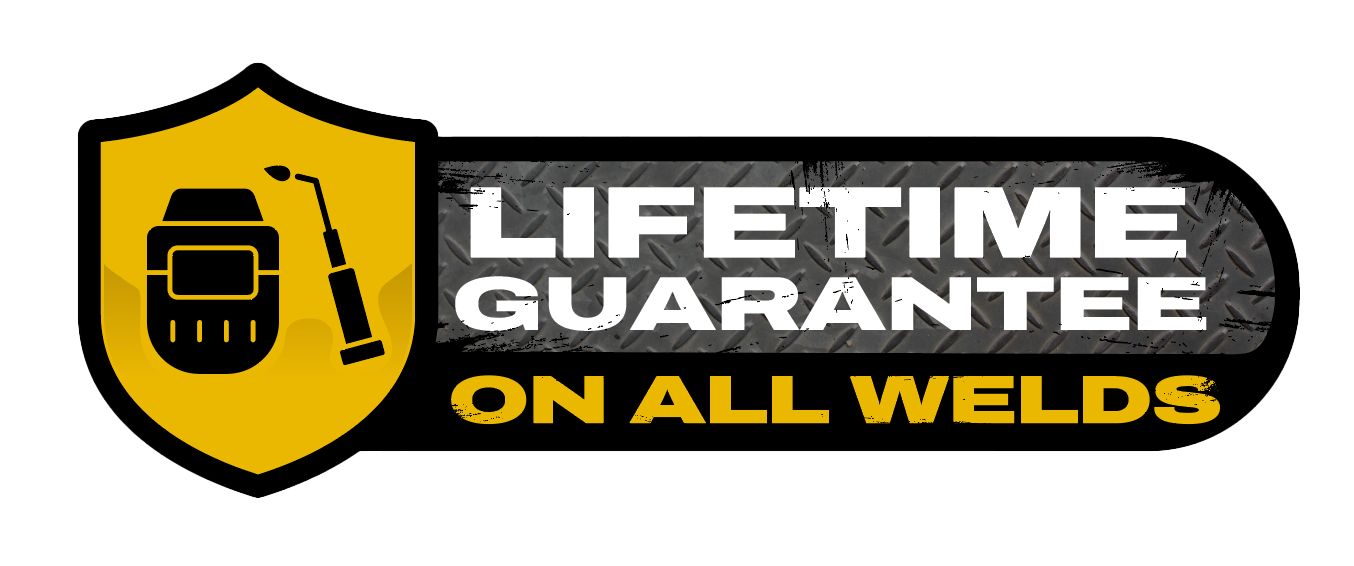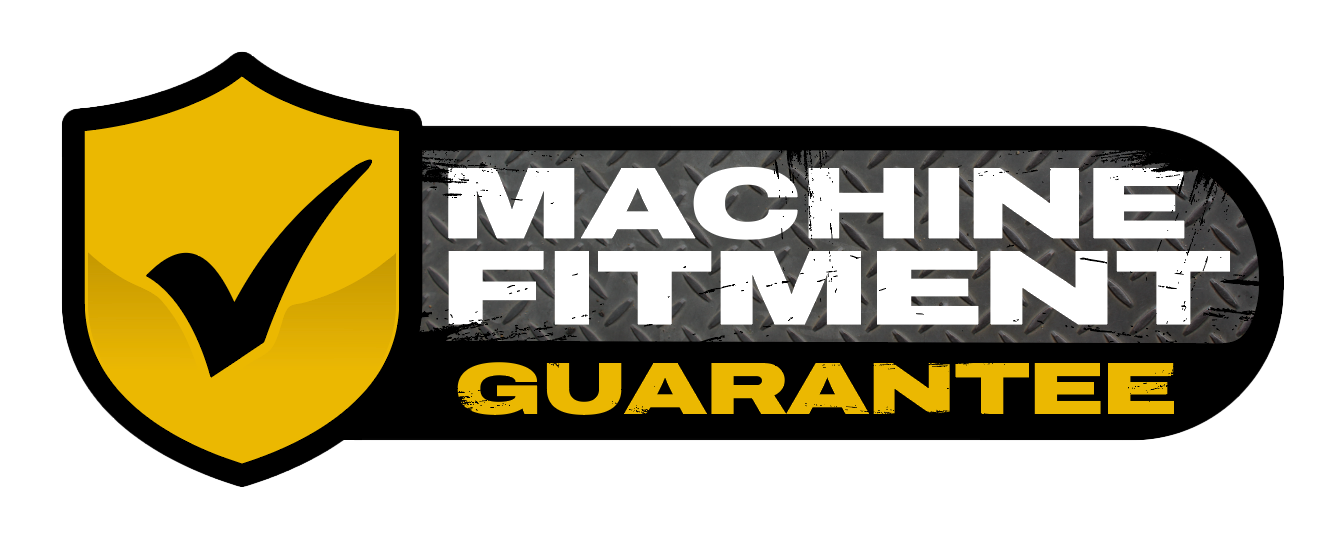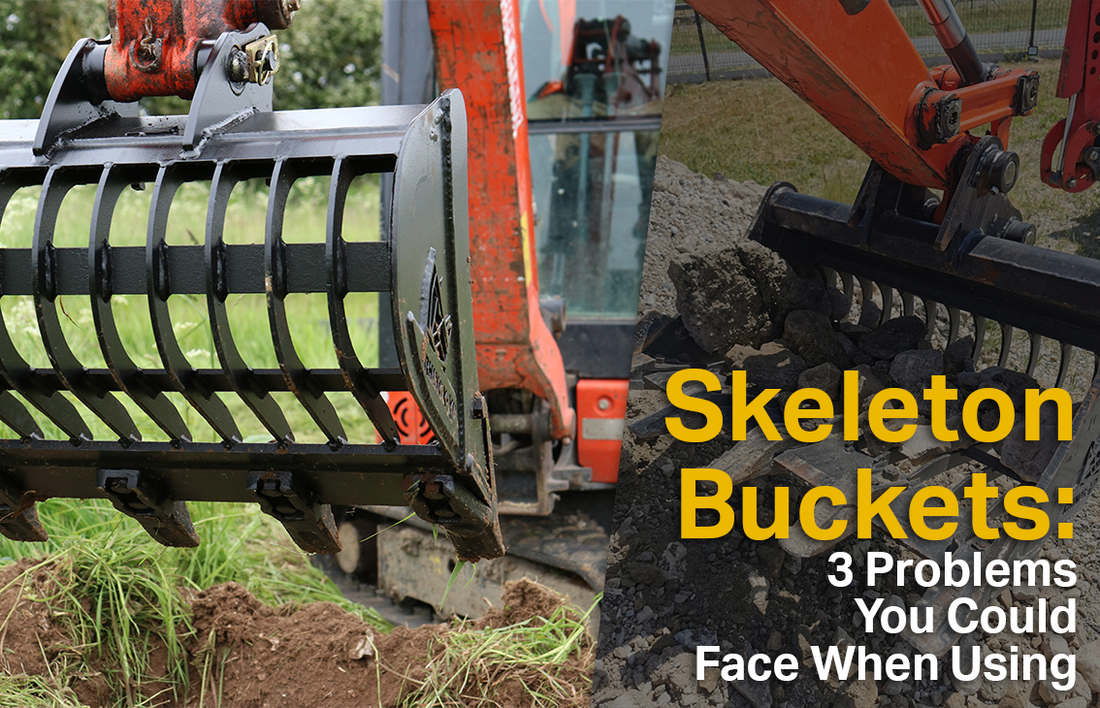
Skeleton Buckets: 3 Problems You Could Face
You'd be silly to think that you won't come across problems when using an excavator. Whether that be worn pins, broken teeth or stuck material in your attachments. But, what are the potential problems you could face when using a skeleton bucket and what would we suggest to help combat them? In this post we're going to discuss the 3 most common problems that you could face and some tips that might make fixing these problems easier. Keep reading to find out more.
3 Problems you can face when using a Skeleton Bucket on your Excavator:

1. Material Too Small Or Getting Stuck
If you know what a skeleton bucket is, or riddle bucket as it's also known, then you know that it's one of the easiest ways to separate out different types of material when using your excavator. The skeleton bucket is designed like a digging bucket but with tines at the back so that you can scope up a mound of material and shake out the smaller bits like dirt and rocks. The problem with this is that it will only work with certain sizes of material. If you're trying to sort small rocks from your dirt this could be a challenging to separate if the material you want to remove is smaller than the space between the tines as the material will just fall straight through. You may also find that material gets stuck between the tines, this isn't a huge problem as it shouldn't effect the effectiveness of your attachment too much but if this does happen we recommend just using a hammer, rod or similar to knock it through.
If you're wanting to separate rocks that are too small and pass through the tines of your skeleton bucket then we would recommend looking into a hydraulic screening bucket. These attachments are a lot more expensive but have smaller gaps to separate out the small rocks too.

2. Tines Bending
Skeleton buckets are one of the more fragile excavator attachments because of the slotted back. Although the tines are usually made of a thicker steel to withstand the harsh materials passing through, they are still susceptible to bending and twisting because of the design. It's a similar idea to breaking sticks, if you spread out 5 sticks and try to break them all at once they will snap very easily, but if you hold all 5 stick together and try to break them it's much harder. Due to the reduced strength, it can cause the tines to bend or twist, especially if you're using your skeleton bucket in extremely harsh material, with much heavier material or over working the bucket.
To avoid your skeleton bucket tines bending or twisting we recommend breaking up the material you're wanting to separate first. For example: use a ripper tooth or digging bucket to churn up the ground first so that you're not putting excessive force through the tines of your skeleton bucket when trying to load the bucket. We also recommend purchasing a skeleton bucket with additional tine support like on the Rhinox skeleton bucket that has additional straps of steel welded in the opposite direction to the tines to support and help them keep their shape.

3. Wearing Out Your Coupler
The final, and most costly problem you could face when using a skeleton bucket is wearing out your coupler. To separate material with a skeleton bucket you have to vigorously shake the crowd control gearstick on your excavator to make the bucket shake out the materials. This harsh action is very wearing on your excavator. This usually means that you will have to frequently replace your bucket pins and occasionally your bucket link and tipping link. This also means that if you're mounting your skeleton bucket to your coupler rather than directly to the machine, you will start to wear your coupler when shaking the gearstick.
As you can imagine, wearing out your coupler is a lot more expensive to repair or replace than replacing a set of pins. Most coupler manufacturers will also have a clause in the warranty agreement that says they won't replace or repair your coupler if it becomes damaged if used with a skeleton bucket. So, we also recommend that if you're using a skeleton bucket, or even something that causes a similar action like a jack hammer, that you always directly mount your attachment to the machine using bucket pins and NOT a coupler.
So there you have it - the 3 main problems that you could face when using a Skeleton Bucket on your excavator. If you have any further questions or queries, leave us a comment down below or contact us for assistance from one of our team.
